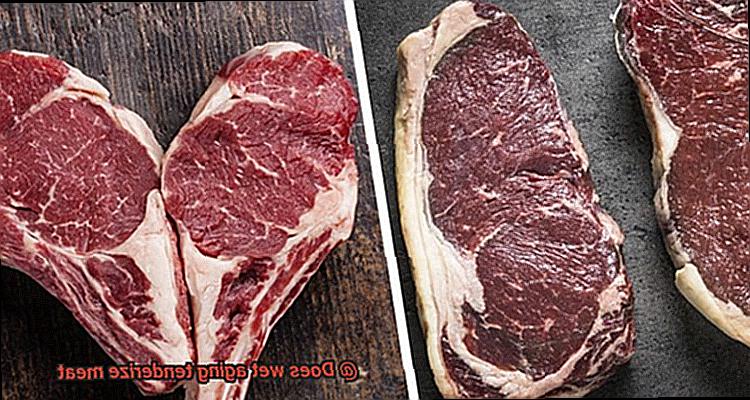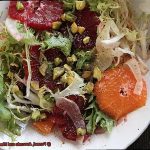Do you ever find yourself standing in front of the meat section at the grocery store, staring at all the different types of beef and wondering what sets them apart? Well, wonder no more. Today we’re tackling the age-old question: does wet aging really tenderize meat?
Before we dive into the nitty-gritty of wet aging, let’s first clear up the basics. Dry aging involves hanging meat in a temperature-controlled environment for several weeks. During this time, moisture evaporates from the meat which results in a more concentrated flavor and naturally tenderized texture. Wet aging, on the other hand, is when meat is placed in an airtight plastic bag and allowed to age in its own juices for a shorter period before being cut and sold.
Now back to our original question – does wet aging make meat more tender? The answer is yes, but not as much as dry aging. While wet aging does break down connective tissue and enzymes within the meat resulting in slightly more tender texture, its main advantage is preserving moisture which leads to juicier and richer flavors.
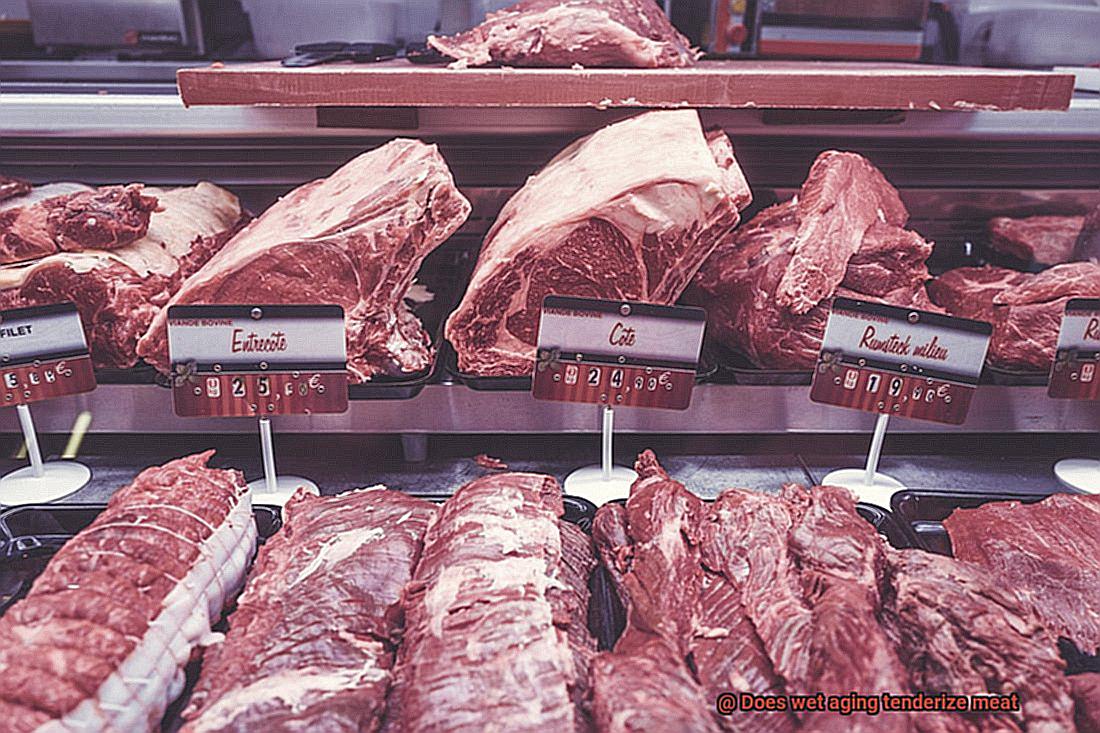
So next time you’re feeling adventurous at your local butcher or grocery store, try both wet and dry-aged meats to see which one suits your taste buds better.
Contents
What is Wet Aging?
Wet aging involves vacuum-sealing freshly slaughtered meat and storing it in refrigeration for several days up to a few weeks, allowing the natural enzymes to break down muscle fibers and make the meat more tender and flavorful.
What sets wet aging apart from its dry counterpart is that it doesn’t involve exposing the meat to air, which means there’s no loss of moisture. This results in less shrinkage, making it a more cost-effective option for many restaurants and butchers. Wet aging is commonly used for beef, pork, and lamb, and can be done relatively quickly, with most meats requiring only a few days to become tender.
However, success with wet aging depends on several factors such as the quality of the beef, proper storage temperature, and length of time it’s aged. High-quality cuts tend to benefit more from wet aging than lower quality ones. It’s also important to store the meat at the right temperature to prevent spoilage.
When done right, wet aging can result in a more tender and flavorful cut of meat that’s perfect for grilling or roasting. It can also help preserve the meat’s color and texture. However, it’s worth noting that some cuts may benefit more from other forms of tenderization techniques like dry aging or marinating.
Does Wet Aging Tenderize Meat?
Have you ever savored a juicy steak that practically liquefied in your mouth? Well, the secret to achieving such a divine culinary experience might just be wet aging.
But let’s get to the meat of the matter – does wet aging tenderize meat? The answer is a resounding yes. Wet aging involves sealing meat in vacuum bags and allowing natural enzymes to break down connective tissue and muscle fibers over time. This process can take anywhere from a few days to several weeks, depending on the cut of meat and desired flavor profile.
However, not all cuts of meat benefit from wet aging. Tender cuts like filet mignon or ribeye may not see significant improvements in tenderness through this technique. But tougher cuts like brisket or chuck roast can become delightfully tender and full of flavor after being wet-aged.
Proper handling and storage are also crucial for successful wet aging. The meat must be kept at a consistent temperature between 33-36°F and used within a reasonable timeframe to ensure safety and quality.
Factors that Affect the Success of Wet Aging
Wet aging could be the answer you’ve been searching for. This process involves storing meat in vacuum-sealed bags at low temperatures for several days or weeks, allowing natural enzymes to break down muscle fibers and connective tissues, resulting in a more tender and flavorful meat. However, not all meats are created equal when it comes to wet aging, and certain factors can affect its success.
First and foremost, the type of meat plays a crucial role in wet aging success. Beef cuts with high levels of marbling, such as ribeye, sirloin, and tenderloin, are the best candidates. These cuts have plenty of intramuscular fat that enhances both flavor and tenderness during the aging process. On the other hand, leaner cuts like flank steak or round roast may not benefit as much from wet aging.
Another critical factor is the duration of aging. While 14 days is the minimum time recommended, some cuts can benefit from up to 60 days or more. The thickness and quality of the meat, as well as personal preference, all play a role in determining the optimal duration. However, longer aging periods also mean more risk of spoilage, so it’s important to monitor the meat closely.
Temperature and humidity levels are also key players in wet aging success. The ideal temperature range is between 34-38°F (1-3°C), which slows bacterial growth while allowing enzymes to work their magic. Maintaining humidity levels at around 80-85% prevents excessive moisture loss from the meat. These conditions create a suitable environment for enzymes to break down connective tissues and muscle fibers, resulting in tender and flavorful meat.
High-quality meat is crucial for successful wet aging. Freshness and lack of discoloration or spoilage are essential indicators of good quality meat that will benefit from this technique. Poor-quality meat will not improve through wet aging and may even spoil further during the process.
Benefits of Wet Aging
Wet aging is a simple process where high-quality cuts of meat are vacuum-sealed and stored at low temperatures for up to 60 days. But what makes wet aging so special? Let’s dive into the benefits.
Firstly, wet aging can greatly enhance the flavor of your meat. As enzymes break down the muscle fibers and connective tissue, the meat becomes more tender and juicy, resulting in a more flavorful eating experience. The longer you age your meat, the greater these effects will be.
In addition to improving taste, wet aging also helps preserve the quality of your meat by protecting it from exposure to air and bacteria. This means that wet-aged meat can last longer in storage than fresh meat, making it a more cost-effective option for restaurants and butchers.
Speaking of cost-effectiveness, wet aging can increase profit margins for businesses by purchasing larger cuts of meat and wet aging them. They can sell more tender and flavorful meat at a higher price point, which benefits both the business and their customers.
But what about home cooks? Wet aging is also a convenient option for those who want to prepare delicious meals without the hassle of dry aging. Wet-aged meat is ready to use as soon as it’s taken out of its packaging, making it an easy option for busy home cooks.
How to Properly Wet Age Beef
Wet aging may be just the thing you need. This process involves vacuum-sealing your beef and allowing it to rest in a refrigerated environment for a set period of time. But what are the steps involved in properly wet aging beef? Let’s dive into the details.
Step 1: Choose High-Quality Beef
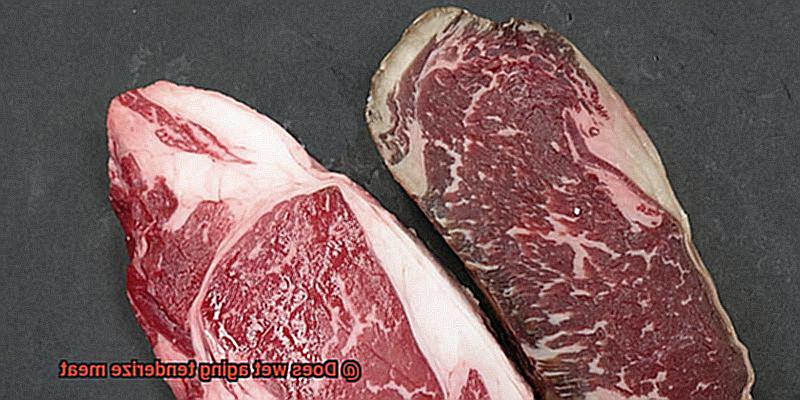
To begin with, it’s essential to purchase high-quality cuts that have already undergone some natural tenderization processes. Look for beef that has been aged for at least 21 days before being packaged.
Step 2: Clean and Trim Your Beef
Before vacuum-sealing your beef, ensure that it’s been cleaned thoroughly. Remove any excess fat, connective tissue, or discolored areas from the meat. Trimming your beef is crucial to ensure that it’s of the highest quality and free from any harmful bacteria.
Step 3: Vacuum-Seal Your Beef
Once your beef has been cleaned and trimmed, it’s time to vacuum-seal it in a plastic bag. Place the bag in a refrigerated environment set to a temperature between 32-36°F (0-2°C). This temperature range is ideal for wet aging beef.
Step 4: Wait Patiently
The waiting game begins now. The length of time required for wet aging will depend on personal preference and the cut of meat being used. Generally speaking, most cuts require 14-21 days of wet aging. Some people prefer to age their meat for longer periods to achieve a more pronounced flavor and tenderness.
Step 5: Check for Spoilage
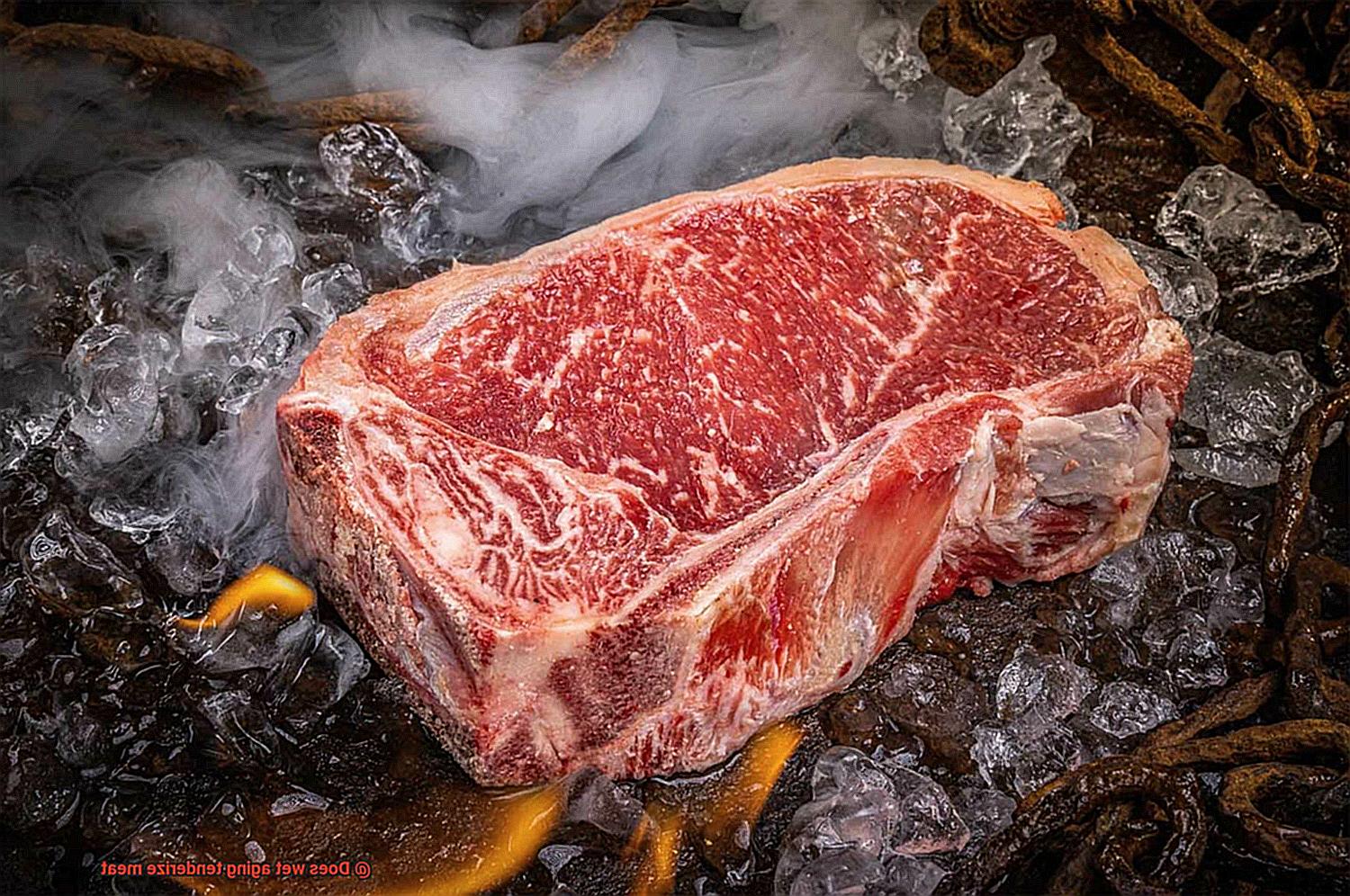
After the initial aging period, check your beef for any signs of spoilage or discoloration. If everything looks good, you can continue to age the beef for up to 30 days or more. However, it’s important to note that wet aging can cause some weight loss due to evaporation and a slightly different flavor profile compared to fresh meat.
Alternatives to Wet Aging
While wet aging is a popular technique, there are other ways to achieve the same results, and we’re going to explore them today.
Let’s start with dry aging, a process that involves hanging meat in a temperature and humidity-controlled environment for several weeks. This method concentrates the flavor and creates a tender texture by allowing the moisture in the meat to evaporate. It’s an excellent option for those who crave bold and complex flavors.
Another alternative is enzymatic tenderization, which uses enzymes to break down tough fibers in meat. You can marinate your meat in acidic ingredients like vinegar or citrus juice or use commercial meat tenderizers containing enzymes like papain or bromelain. This method is perfect for those who prefer a zesty and tangy flavor profile.
If you love getting hands-on with your cooking, mechanical tenderization is for you. This technique involves using tools like a meat mallet or tenderizer to physically break down the fibers in the meat. It works wonders for tougher cuts of meat like flank steak or round roast.
Last but not least, slow cooking methods such as braising or stewing can also tenderize meat by breaking down tough connective tissue over long periods of time. By cooking meat low and slow in liquid, it becomes tender and flavorful. This method is perfect for those who want to set it and forget it while enjoying a scrumptious meal.
Common Mistakes to Avoid when Wet Aging Beef
Wet aging can indeed enhance the quality of your beef, but it’s important to avoid some common mistakes that can affect the final outcome. As an expert in this field, I’ve got you covered. Here are some common mistakes to steer clear of when wet aging beef:
- Inconsistent Temperature and Humidity: To achieve the desired tenderness and flavor, it’s crucial to maintain a consistent temperature and high humidity environment during the aging process. Any fluctuations or low humidity can spoil or dry out the meat, resulting in an unpleasant taste and texture.
- Improper Trimming: Before placing your beef in a vacuum-sealed bag, ensure that you trim any excess fat or connective tissue. These tissues can become tough and chewy during the aging process, affecting the texture of the meat.
- Aging Your Beef for Too Long: Wet aging is all about finding the perfect balance between tenderness and flavor. Aging your beef for too long is one of the most common mistakes that people make, leading to overly tender and mushy meat that ruins the overall taste experience. Generally, wet aging for 14-21 days is recommended for optimal results.
- Low-Quality Beef: The quality of the meat used for wet aging will have a direct impact on the final product. Using low-grade cuts of beef can lead to undesirable results, so invest in high-quality cuts for best results.
0HbBmtIqPtw” >
Conclusion
In summary, wet aging is a method that involves sealing meat in a vacuum and letting it age in its own juices for several days or weeks. Although not as effective as dry aging, wet aging does aid in breaking down connective tissue and enzymes within the meat, resulting in a slightly more tender texture. The most significant benefit of wet aging is preserving moisture, which leads to juicier and richer flavors.
Several factors can impact the success of wet aging, including the type of meat, duration of aging, temperature and humidity levels, and quality of the meat. High-quality cuts tend to benefit more from wet aging than lower quality ones. To avoid spoilage, it’s crucial to store the meat at the right temperature.
Wet aging enhances the flavor of your meat by allowing natural enzymes to break down muscle fibers and connective tissues, creating a more tender and juicy eating experience. Proper handling and storage are essential for successful wet aging.
While wet aging is popular among chefs and home cooks alike, there are alternative methods to achieve similar results such as dry aging or enzymatic/mechanical tenderization. Slow cooking methods like braising or stewing also produce comparable outcomes. However, when it comes to wet aging beef specifically, common mistakes such as inconsistent temperature/humidity levels or using low-quality beef should be avoided at all costs.

